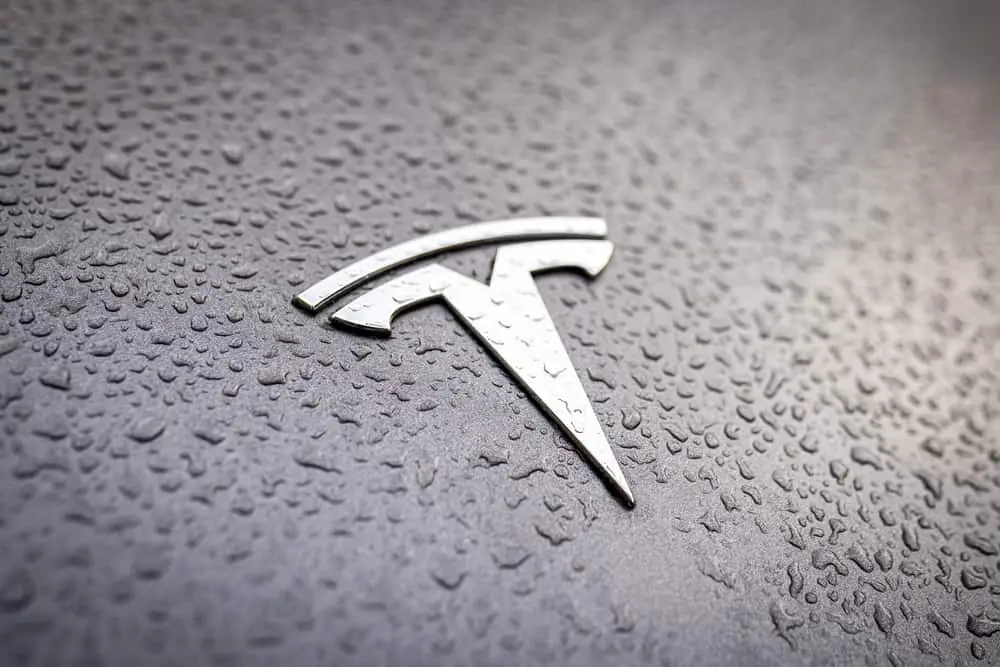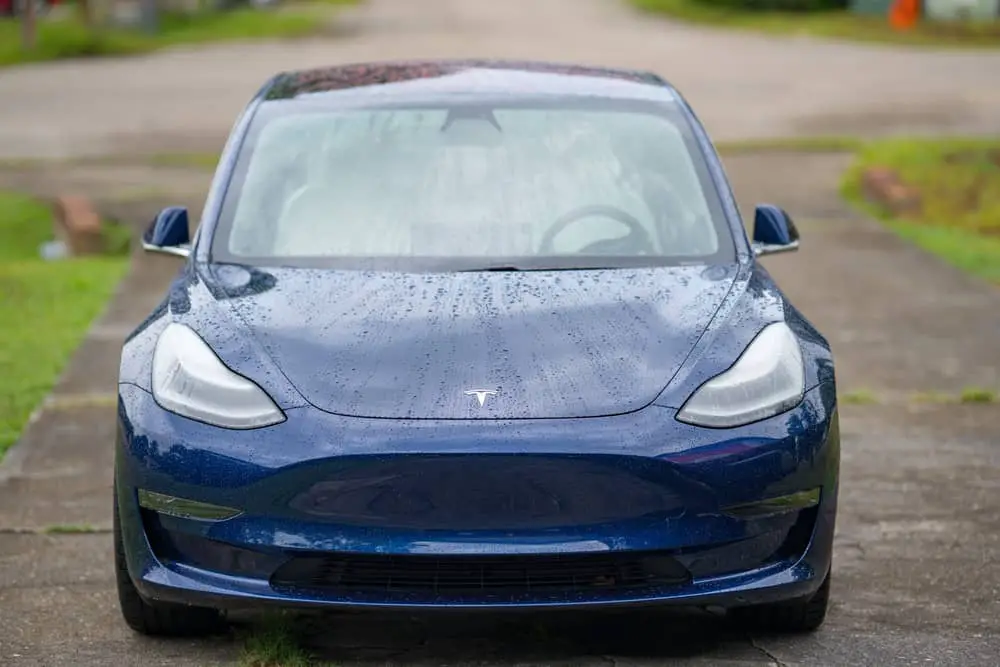Electric vehicles, like Teslas, have revolutionized the automobile industry with their eco-friendly approach and advanced technology.
One question that often comes up with electric vehicles, particularly Tesla models, is whether they can drive through water. This is a valid concern for many potential EV owners who live in areas prone to flooding, heavy rain, or those who need to cross shallow streams or puddles often.
In this article, we will dive into the specifics of a Tesla’s ability to drive through water, discuss the various factors that may affect its performance, and provide some practical advice for those considering an electric vehicle.
Tesla and Driving Through Water
Air Intake in Electric Cars
Unlike traditional gasoline-powered vehicles, electric cars like Tesla do not rely on air intakes to function. Gasoline engines need a constant supply of oxygen to burn fuel, thus requiring an air intake system. However, electric vehicles such as Teslas use electric motors and do not require oxygen for combustion.
When driving through water, the absence of an air intake system is advantageous, as it lessens the risk of water entering the engine and causing damage.
Waterproofing in Teslas
Tesla vehicles are equipped with some water-resistant features that protect crucial electrical components from water ingress. For instance, the battery pack and electric motors are sealed to prevent water damage.
- Battery pack: The battery pack in a Tesla is designed with multiple layers of protection, which helps prevent water from entering the cells. This feature is essential for maintaining long-term performance and ensuring that the vehicle can safely navigate through shallow water.
- Electric motors: Tesla vehicles’ electric motors are also sealed to protect the electronics and connections from water damage. This sealing ensures that the motor can continue operating properly even after being exposed to water.
However, it is crucial to note that Teslas, like all vehicles, have limits when it comes to handling water depths. Driving through deep water can still be risky, as it may lead to the flooding of the passenger cabin, damaging electronic components, and potentially trapping occupants.
It is advisable to exercise caution and avoid driving through deep water or flooded areas whenever possible.
Safety Concerns and Precautions
When it comes to driving a Tesla or any electric vehicle (EV) through water, there are some safety concerns and precautions that owners should be aware of. In this section, we will discuss two main areas of concern: electrocution and high voltage cables and submersion and flooded areas.
Electrocution and High Voltage Cables
Electric vehicles, like Teslas, have high-voltage cables and components that can pose a risk of electrocution if they come into contact with water.
To minimize this risk:
- Avoid driving through deep water or floodwater. Water can seep into the electrical components and cause damage or create a hazardous situation.
- Adhere to manufacturer guidelines. Follow Tesla’s recommendations for driving in wet conditions or through shallow water.
- Inspect for damage. After driving through water, inspect your Tesla for any signs of damage to high-voltage cables and components.
Submersion and Flooded Areas
Driving through submerged or flooded areas can cause damage to the battery pack and other parts of the electric vehicle. Here are some ways to reduce the risk of damage and ensure safety:
- Check the depth of water. If the water is deeper than the recommended limit provided by Tesla, it’s best to avoid driving through it.
- Watch for debris. Submerged or flooded areas can hide debris that could damage the vehicle’s battery pack or other components.
- Drive slowly. Driving at a slow pace through water can minimize the risk of water entering the battery pack or other sensitive areas.
By keeping these safety concerns and precautions in mind, Tesla drivers can mitigate the risks associated with driving in flooded or submerged areas. Always prioritize safety and follow manufacturer guidelines when it comes to driving through water.
Notable Tesla Water Incidents
China Rainstorm Incident
In China, a Tesla Model S driver encountered a severe rainstorm and managed to drive the car through flooded streets. The incident demonstrated the impressive capabilities of the Model S in handling extreme water conditions. Elon Musk, Tesla CEO, later commented on the event and praised the vehicle’s performance in such harsh conditions.
The Model S has demonstrated itself to be a reliable and well-built car, even in the face of natural disasters like rainstorms.
Model S Submarine Test
Another example of Tesla’s remarkable water-handling capabilities is when Elon Musk mentioned testing the Tesla Model S as a “submarine.” While it was not a real submarine test, it showcased the company’s innovative mindset and dedication to pushing the boundaries of electric vehicle technology.
Tesla has continually surprised the world with its product launches, and the notion of a “submarine” test further emphasizes the company’s creative spirit.
These incidents highlight Tesla’s resilience and ability to fare well in challenging water conditions. Whether it is driving through a rainstorm in China or the audacious concept of a submarine test, Tesla continues to showcase its innovation and commitment to creating ground-breaking electric vehicles.
Tesla Models and Water Capabilities
Model 3 Deep Water Wading
The Tesla Model 3, like most vehicles, isn’t designed for deep-water wading. However, the car has demonstrated some water-handling abilities, but it is not recommended to drive the Model 3 through deep water.
The Model 3 consists of a sealed battery pack and electric motor, which prevents water entry to some extent. It’s important to note that driving through deep water can lead to potential damage and voiding of the vehicle’s warranty.
Cybertruck’s Amphibious Features
The Tesla Cybertruck, known for its unconventional design and robust features, has been hinted at having some amphibious capabilities. Elon Musk himself mentioned this possibility in a tweet.
While detailed specifications of the Cybertruck’s water-wading ability have not been released yet, it’s anticipated that the vehicle will be able to handle water to some degree. Keep in mind, though, that it’s not specifically designed as an amphibious vehicle.
Always exercise caution and follow the manufacturer’s recommendations when driving any vehicle through water. Be aware of potential risks and damages that can occur when taking a vehicle through deep water or submerging it.
Caring for Your Tesla in Wet Conditions
Tesla vehicles are designed to handle various weather conditions, including wet and rainy environments. However, it is essential to take extra care when driving in these situations to ensure the safety of both the vehicle and its passengers.
Navigating Flooded Roads
While Teslas are electric vehicles and have fewer components susceptible to water damage than traditional internal combustion engine (ICE) vehicles, it is still crucial to exercise caution when driving on flooded roads. If you encounter a flooded road, follow these recommendations:
- Avoid driving through deep water: It is not recommended to drive your Tesla through water deeper than the lower edge of your vehicle’s wheel rims. Deeper water can potentially damage the battery or the drivetrain, compromising the vehicle’s safety and performance.
- Drive slowly: The slower you drive, the less likely water will splash into the engine compartment or create waves that may flood your vehicle. Minimizing speed also reduces the risk of hydroplaning, which can cause a loss of control.
- Check your surroundings: Be alert for any debris, potholes, or other hazards that may be hidden by the water.
Tesla Warranty and Flood Conditions
The Tesla factory warranty covers most components of the vehicle under normal driving conditions. However, it is essential to understand that damage caused by driving through excessively deep water or floods is not covered by the warranty.
If the vehicle is submerged or experiences water damage to the battery, drivetrain, or electronics, you may be responsible for the repair costs.
To protect your investment and ensure the longevity of your Tesla, adhere to the recommended driving practices in wet conditions and stay informed about any updates or improvements available for your vehicle. Remember that keeping yourself and your Tesla safe is a priority in any weather condition.



